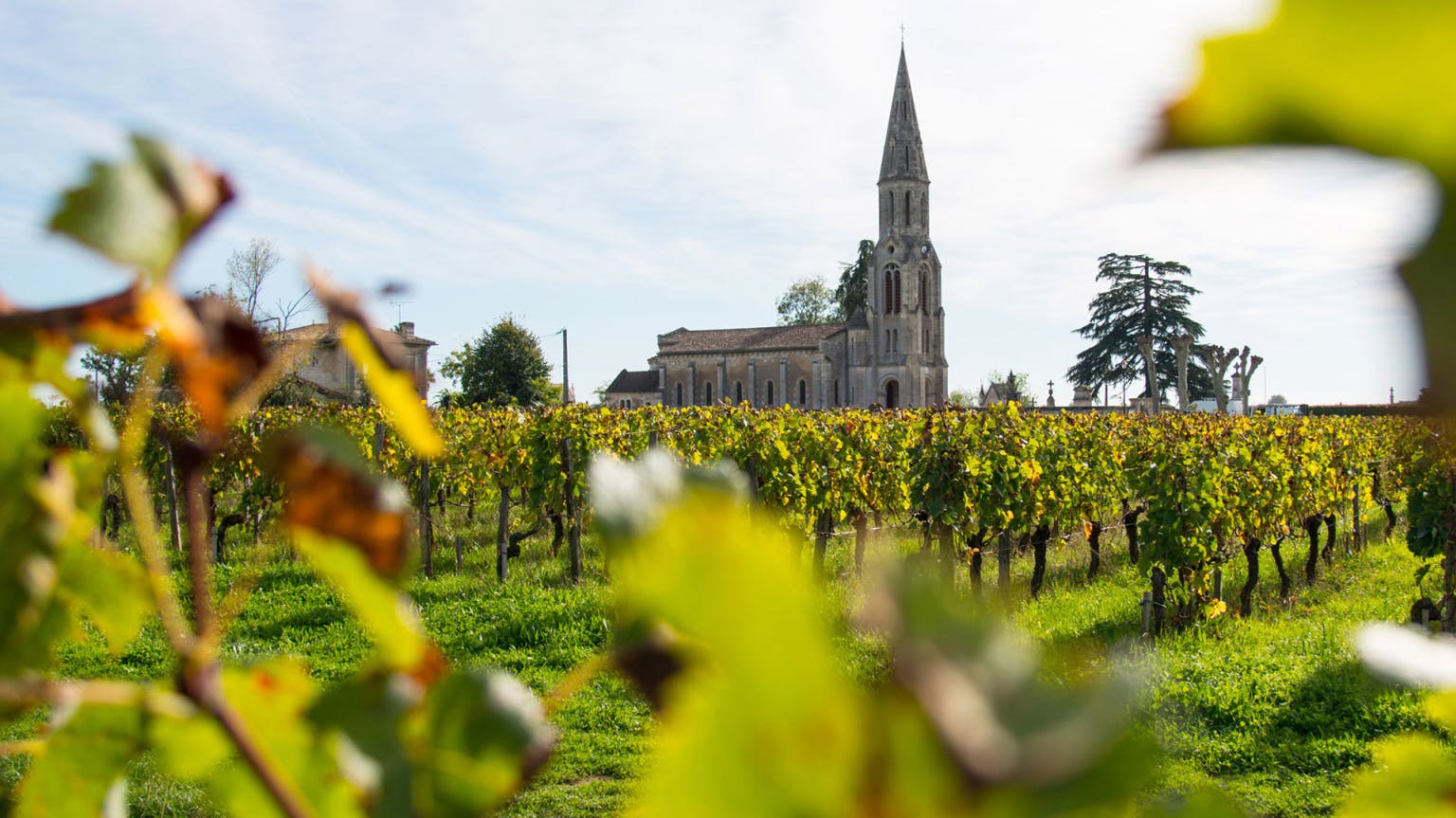Talking to the Bordelais vignerons, there’s a recurring sense of relief and elation about the 2020 vintage. These fantastic wines don’t speak of the challenges that tested their wits through a jittery growing season, from the very first buds to the final harvest. For Nicolas Audebert (Chx Canon and Rauzan-Ségla), this is a victory that has never tasted so sweet. If vintages were a sporting match, 2019 was an easy win, whereas 2020 was a nail-biter – with a winning goal scored in the last minute of injury time. This vintage sits in a trilogy of great vintages in Bordeaux – but for the vigneron, their heart undoubtedly lies with 2020.
Conditions varied significantly between the two Banks, and between individual communes. Here we dig into the detail of each appellation.
The Right Bank
This is a fantastic vintage for the Right Bank. Although it shared similar struggles to the Left Bank with both a wet spring and dry summer, berry ripeness was easily reached, and it didn’t have the challenge of lower Cabernet yields. If anything, holding out for full phenolic ripeness kept vignerons on their toes.
Pomerol
Pomerol had an extreme year in 2020, but the result for many is fantastic wine. Ch. Lafleur’s Omri Ram compares the 2020 vintage to “a great artist with a disturbing childhood”. It carries the scars from the extreme growing season, bringing something uniquely special to the wine; much like a great artist, whose turbulent childhood was the catalyst for their creativity.
The winter and spring were extremely wet and mild causing serious problems with mildew, which impacted yields (Moueix lost 30% of their crop). This was followed by a complete drought all the way through to harvest, not benefiting from the August rain seen elsewhere. In this sense, 2020 in Pomerol has more similarities than differences when compared to the last five vintages.
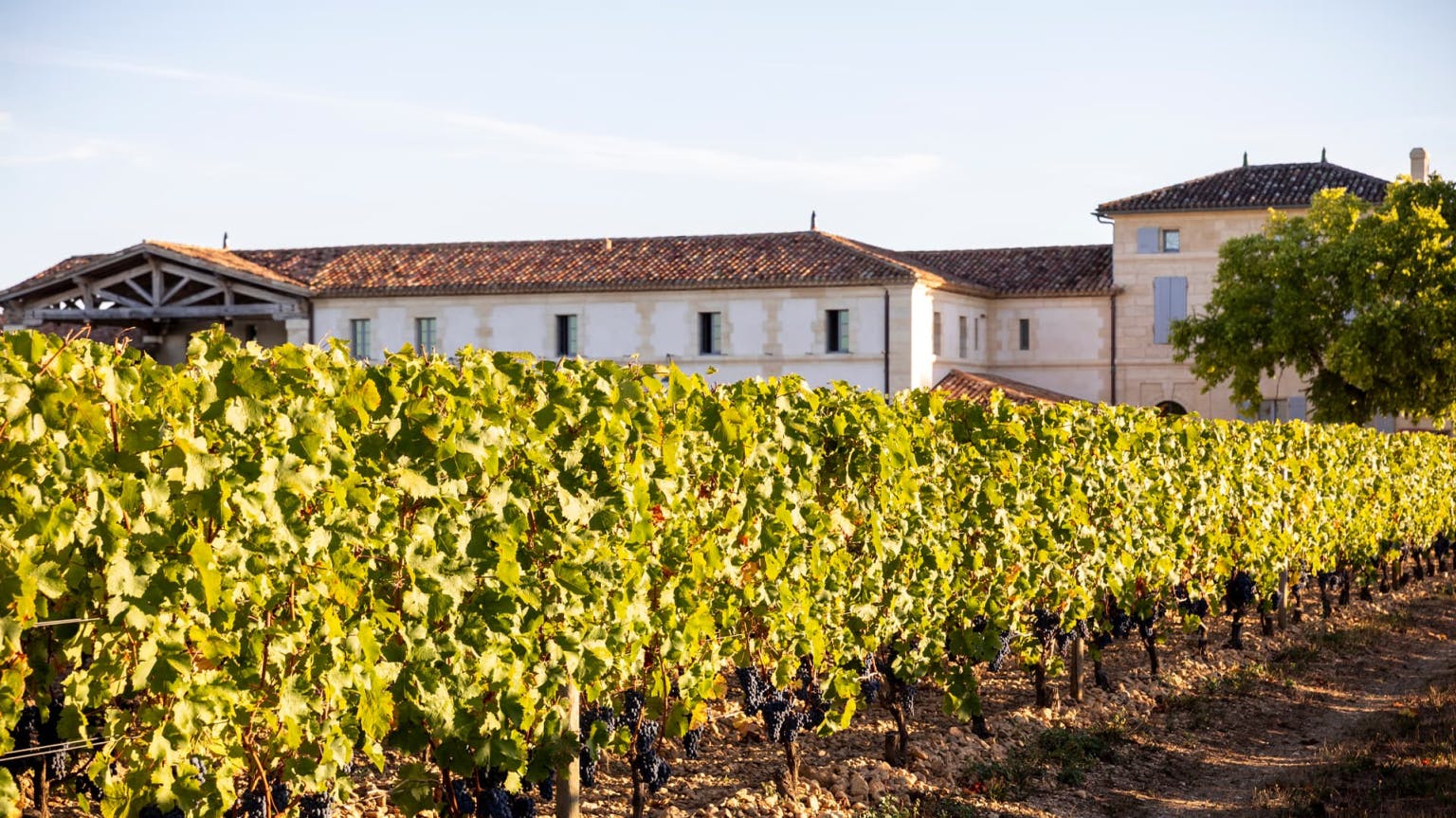
Ram highlighted that the distinct element in 2020 was the violent switch between the two halves of the season, requiring lots of work in the vineyard. In 2019, with its very hot spring, the vines were naturally reducing their canopy to conserve water; in 2020 it was the opposite, and due to wet, mild weather, the vines were well ahead in their development with large canopy growth. When the weather shifted gear in June it became very hot, very quickly and the region did not see rain from 18th June right through to harvest, bar one small shower on 8th August.
The challenge in these conditions is to keep the vines healthy – dropping fruit, curtailing surface roots, removing cover crops, opening up the soil to catch the morning dew, removing the canopy. All these jobs not only affected the crop but were hugely manual processes – with every château having to make choices.
Jean-Baptiste Bourotte, owner of Pomerol’s Ch. Bonalgue and Clos du Clocher, describes 2020 as a “frighteningly brilliant tightrope walker” of a vintage, only rescued, he believes, by the magic of Pomerol’s blue clay, “playing its role as a miraculous sponge” soaking up the winter rain and keeping the vines rejuvenated over the dry summer. For Vieux Château Certan the drought favourably slowed down the vigour of the old vines producing “intensely aromatic Merlot”. Despite the drought, Henri-Bruno de Coincy – owner and winemaker at Ch. Belle-Brise – saw no hydric stress in his berries, describing the vintage as a “wonder of nature”.
Ch. Clinet and L’Evangile believed picking dates were vital. L’Evangile was first out in the vineyard, harvesting the Merlot by 2nd September – picking 80% of the entire crop prior to the mid-September heatwave. Clinet kept their composure: their Merlot was ready to pick at the beginning of September, but they held out until the 14th for the grapes to reach full phenolic ripeness. The result, owner Ronan Laborde believes, is the most accomplished wine since he took over the property in 1999, describing it as “pure, powerful, spiritual”. It certainly is special.
For Jérémy Chasseuil, owner and winemaker at Ch. Feytit-Clinet, a key aspect of 2020 was the cool September nights, which he believes are behind the freshness of the wines, despite the contrasting concentration and warmth of the vintage, resulting in something “really exceptional”. Marielle Cazaux of La Conseillante agrees: “It is the freshness and purity of La Conseillante that is really impressive”. Cazaux also opted to only pick in the mornings to maintain freshness.
Overall, Pomerol produced some incredible wines in 2020. Whatever the challenges, the wines are ripe and flamboyant in style, while the tannins bring freshness to counter their exuberance. They are very much in the ilk of 2019 and 2018 – a product of a hot, dry, sunny growing season. Acidities are always fairly low and pHs high in Pomerol, and there is little difference in 2020’s acidity or alcohol levels compared to the last five vintages.
Saint-Emilion
Like Pomerol, Saint-Emilion experienced a very wet start to the year. “It was the wettest start in 20 years,” Nicolas Thienpont (Chx Pavie Macquin and Beauséjour Duffau-Lagarrosse) said. The warm winter saw early budding and early flowering occurring at a fortunate break in the weather. But May and early June became cold, followed by more rain, and many vineyards were waterlogged. The break in the weather came on 19th June, after which it didn’t rain until 11th August – 54 days without rain and temperatures at some points over 40˚C. But as Ch. Figeac’s Frédéric Faye notes, August saw ideal weather conditions for véraison – with high daytime temperature to accrue sugar and ripen tannins, while cool nights preserved acidity. Surprisingly, the pips were ripe from August. Figeac took their time harvesting over four weeks from 4th September.
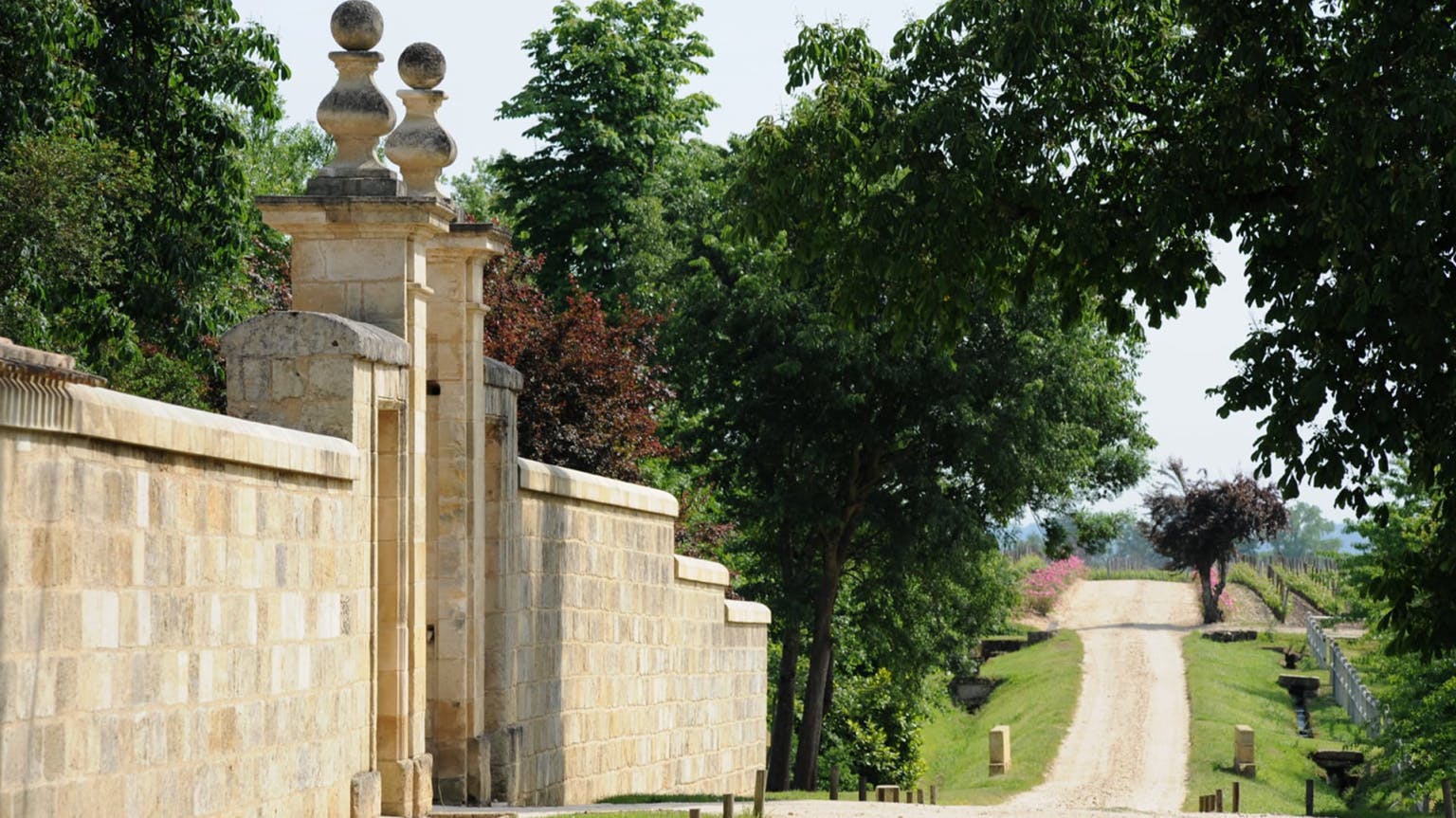
The 2020s showcase two positive developments in Saint-Emilion: firstly, better retention of aromatics; secondly, a better handling of Merlot’s tannins through greater precision during élevage. And this isn’t just at the top end – properties such as Bellefont-Belcier and Tour Saint-Christophe prove that even at this more modest price point, you can find real precision. But as in neighbouring Pomerol, and the previous dry, hot vintages that preceded 2020, you really need the terroir – the clay in particular – with the moisture-locking capabilities, to get the most out of the year’s long, dry summer.
Angélus produced a particularly impressive 2020 – a standout in our tastings. Hubert de Boüard highlighted that the high levels of tannins meant they needed to pull back on extraction and employ lower temperatures (25˚C) for fermentation to preserve the wine’s balance. The results are extraordinary.
“I am very satisfied with the 2020 vintage, which is rare for me,” Ch. Ausone’s Pauline Vauthier states, insouciantly. Clearly delighted with the 2020, she describes it as “a vintage with exceptional qualities”, one that reminds her of both 2010 and 2015. For Ch. Cheval Blanc’s Pierre-Olivier Clouet, 2020 is “complex and complete, powerful and dense”.
Frédéric Castéja from Ch. Trottevieille (and Pauillac’s Batailley) was one of many to say that Merlot shone in 2020. In recent years it has been the Right Bank’s Cabernet Franc that gets all the glory, but for Castéja and others, “The Merlot are of an outstanding level.” Trottevieille’s location on the limestone plateau also meant that the summer drought did not cause any concern. Similarly, Troplong Mondot and Clos de Sarpe were both thankful that their terroir saw them through the drought unscathed, with no hydric stress in the vineyard. Clos de Sarpe harvested as late as 28th to 30th September, while still retaining a staggeringly low 3.2 pH, thanks to their unique site. Jean-Luc Thunevin (owner of Ch. Valandraud) sees 2020 as the third great vintage in a row for Saint-Emilion, the wine displaying “freshness and perfect maturity”. He also opted for cooler vinification temperatures but longer maceration times to make the most of the “high tannic potential” of the year.
Although it is hard to generalise, the 2020 Saint-Emilions often have a captivating perfume, beautifully ripe fruit and concentrated yet not overpowering tannins. This latter element in spite of this being a vintage very rich in tannins – the dry weather producing thick skins, rich in polyphenols, which required careful handling in the winery.
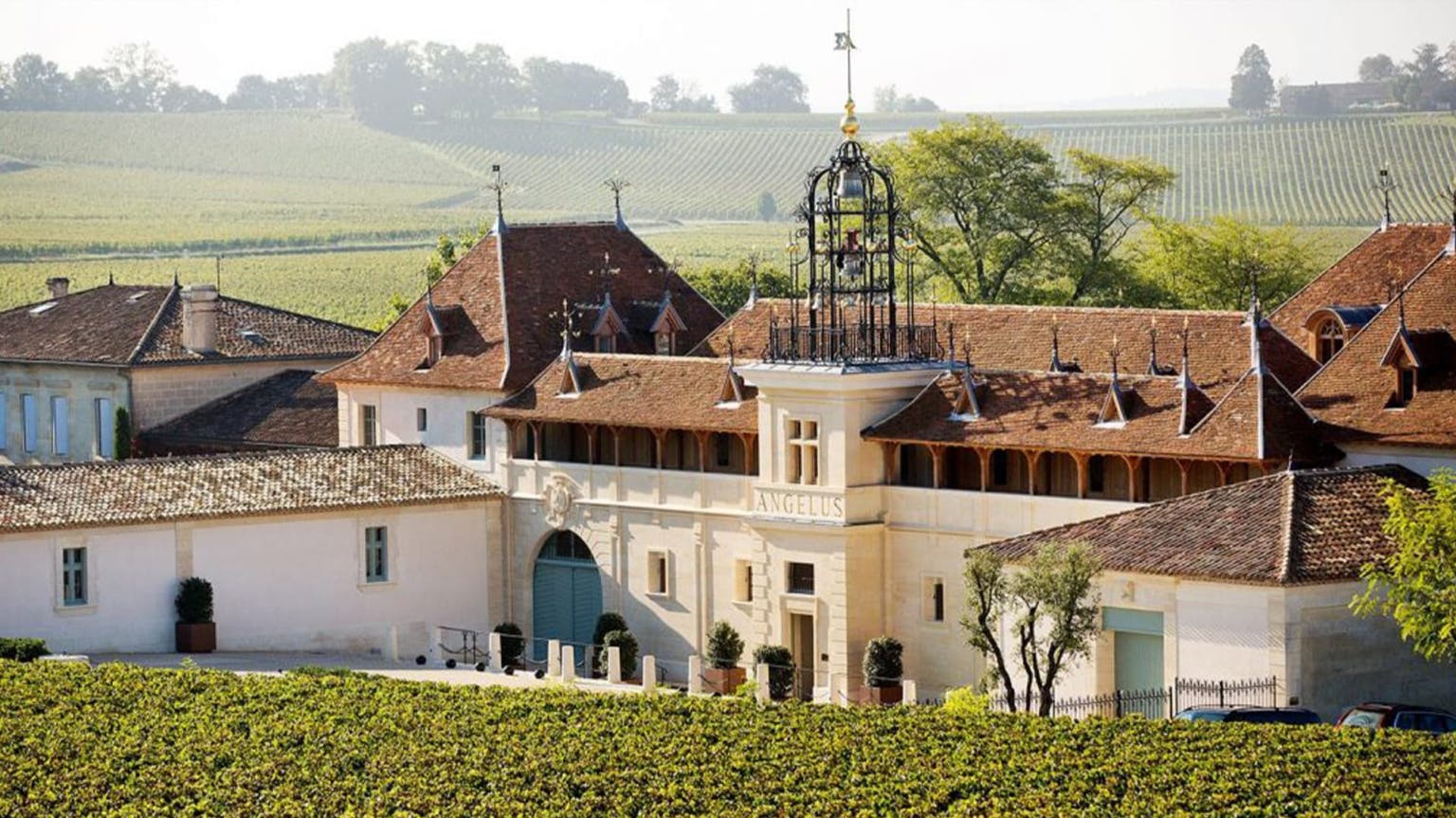
The Left Bank
The great paradox of the Left Bank in 2020 is that despite the dry, hot conditions, it is not a “solar” vintage. Alcohol levels are reasonable and, in the best examples, there is a distinct freshness to the wines.
Speaking with châteaux up and down the Médoc, no one is completely sure where the freshness comes from, particularly when pH levels are quite high. But the challenges Cabernet Sauvignon faced must have played an important role. While it drastically reduced quantity (down by up to 50%), some Cabernet-dominant blends in the Médoc are amongst the finest wines of the vintage.
The first major issue was that Cabernet Sauvignon was more affected by the spring rain. Guillaume Pouthier (Les Carmes Haut-Brion) suggested it diluted the necessary potassium required for the vines to build sugar levels in the berries, therefore leading to lower alcohol in the vintage’s Cabernet-led blends. Secondly, the best Cabernet is typically grown on the warmer gravel soils, which were most affected by the drought, producing tiny berries. Thirdly, the warm winds in September impacted the Cabernet, causing water to evaporate from the grapes – building concentration, but reducing yields. Finally, being late ripening, the Cabernet Sauvignon was largely picked at the end of September when there were outbreaks of rain. While the berries remained largely unaffected due to the thick skins, it played a part in the final wine to some degree. For some, the resulting lower alcohol levels made winemaking much easier and produced more precise wines.
The resulting wines are beautifully balanced, supple and approachable. The top examples are outstanding, full of character and very much retaining a sense of place – in terms of both appellation and house style.
Margaux
The early growing season and the drought were, for Ch. Margaux’s Phillipe Bascaules, the most significant factors in 2020. “The drought caused the berries to be very small. When the rain came in mid-August, it didn’t affect the size of the Cabernet berries. This meant yields were low at 36hl/ha.” Normally Ch. Margaux likes to be at 45hl/ha. For Bascaules, it explains the remarkable concentration of the wine. He had no concern for the phenolic ripeness of the berries despite the early harvest, since the ripening time needed was the same as any other vintage – everything was just two weeks earlier than normal.
Nicolas Audebert (Rauzan-Ségla and Canon) identified how the warm September wind impacted the Cabernet Sauvignon much more than the Merlot – concentrating the juice and bringing down the yields. Ch. d’Issan was down from 50hl/ha in 2019 to 38hl/ha in 2020, while Du Tertre, with predominantly young vines, managed to crop just 25hl/ha – the lowest in the history of the estate. Ch. Brane Cantenac were also significantly hit, down 30% from 2019.
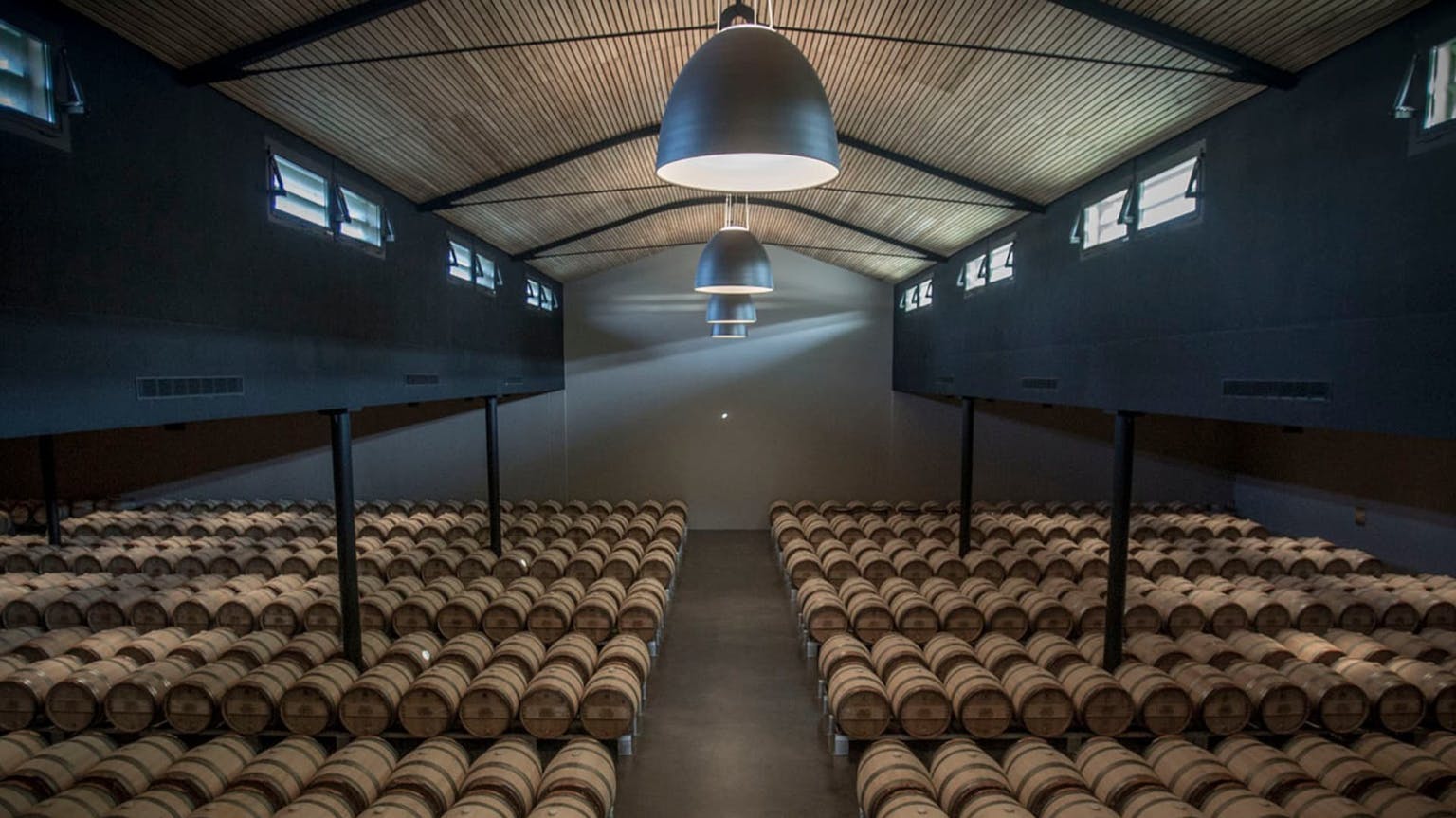
For Ch. Palmer, 2020 was a paradox. Winemaker Thomas Duroux explained that the dry, sunny conditions in Margaux should make 2020 “a climate vintage – like 2005 or 2009”, but the wine isn’t dominated by the heat of the year. It is also, for Palmer, an immediately expressive vintage. “We normally take our time blending the wine from November to January but in 2020, we had already completed 80% of the blend following fermentation. It was so easy to read.”
Chx Marquis d’Alesme and Labegorce are in agreement with Palmer. Despite it being the sunniest season in 10 years, it is not a “solar” vintage but “a vintage of balance and elegance, with intense aromatic expressions and a magnificent tannic line,” says winemaker Marjolaine Maurice de Coninck.
While quality isn’t totally uniform across the region, the finest 2020s capture the Margaux-esque prettiness and elegance, while retaining complex, detailed tannins and plenty of concentration. The wines are pleasingly more medium-bodied and moderate in alcohol compared to 2018 and 2019, which will no doubt prove popular for many Bordeaux drinkers.
Saint-Julien
For Saint-Julien, it was a similar story. While July and early August were very hot and dry, most of August and September – according to Damien Barton-Sartorius at Chx Léoville and Langoa Barton – weren’t excessively so, with cool nights during the all-important véraison. Terroir became an important feature for the vines’ handling of the drought. According to Ch. Beychevelle’s Philippe Blanc, the three-week head start to the season was reduced to seven to 10 days, as the vines shut down at the height of the heatwave.
Léoville Poyferré’s Isabelle Davin noted the welcome arrival of the miraculous thunderstorms from 11th to 13th August, bringing much needed rain to the appellation and saving the vintage. If the rains had not arrived then, they were looking at a vintage similar to 2003. The thunderstorms in August were crucial for the completion of véraison, whilst the diurnal range at the beginning of September ensured that precious aromatics and acidity levels were preserved.
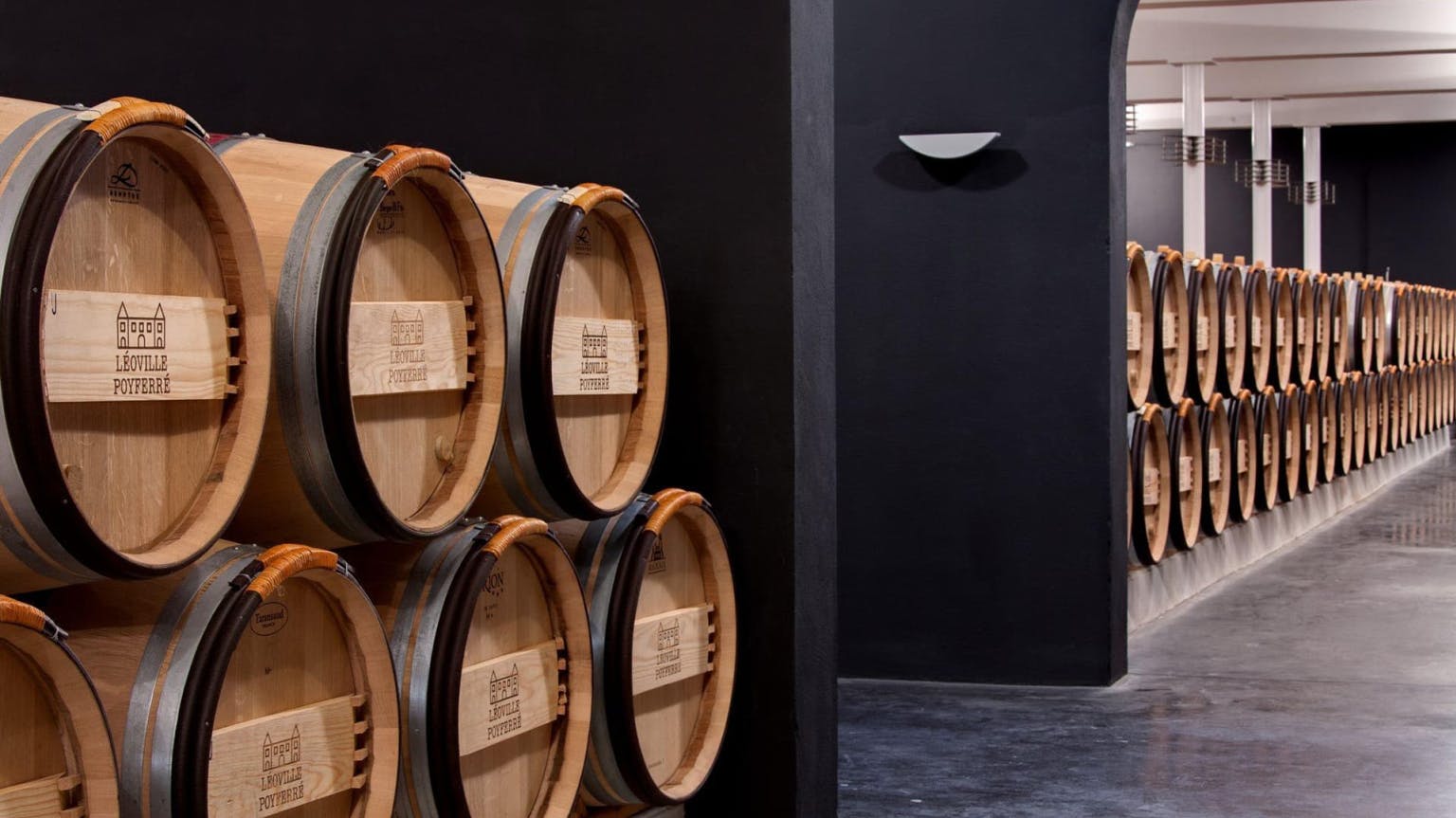
Bruno Borie of Ch. Ducru-Beaucaillou also highlighted the moderate weather in Saint-Julien. “There were 28 days above 30˚C, but only six days above 35˚C,” he explained. Borie was delighted that it was the first time since 1958 that the first three weeks in September – while the grapes were in the final stages of ripening – had no rain. He compares 2020 to 2010 in its academic structure, versus the exoticism of 2009, ’18 and ’19. It’s an extraordinary wine.
Léoville Las Cases’s Antoine Gimbert outlines another important feature of the vintage: its transparency when it comes to each château’s style and appellation. Although a complicated year, he describes it as “luscious but extremely well knitted, extremely dense”.
Ch. Talbot’s Jean-Michel Laporte wanted to take full advantage of the perfect weather conditions of late September in Saint-Julien, readjusting on a day-by-day basis which plots to pick. He describes 2020 as “a vintage of contained power. Low alcohol, good acidity, very precise tannins… with already a very nice length for such a young wine.”
A particularly consistent appellation, there are some really exuberant wines in Saint-Julien in 2020. While the season was hot and dry, the wines in general do not ever topple into over ripeness, despite in some cases only moderate levels of acidity. The wines are rich in tannins and are remarkably expressive, while remaining medium-bodied and with moderate alcohols.
Pauillac
As you move further up the Médoc and the proportions of Cabernet Sauvignon become more dominant, the yields tend to decrease, typically with 25 to 30% less wine than 2019. There’s no doubt that the drought in July and the warm winds in September had more affect in Pauillac than anywhere else – producing a crop of, as Lynch-Bages and others highlighted, small but highly concentrated berries. But this didn’t affect the quality of the Cabernet; in fact, the Cabernet-led wines here are some of the finest examples of the vintage.
Pichon Comtesse’s 2020 had one of the highest proportions of Cabernet Sauvignon ever in their blend – up to 77%, along with an additional 6% Cabernet Franc. The wine exudes the distinct graphite minerality so typical of Cabernet Sauvignon grown on these gravel soils. At Ch. Pichon Baron special efforts were made during extraction to “boost skin extraction and limit seed tannins” that were present in significant quantities in the 2020 Cabernet. The result is a wine of fantastic colour and no hint of greenness.
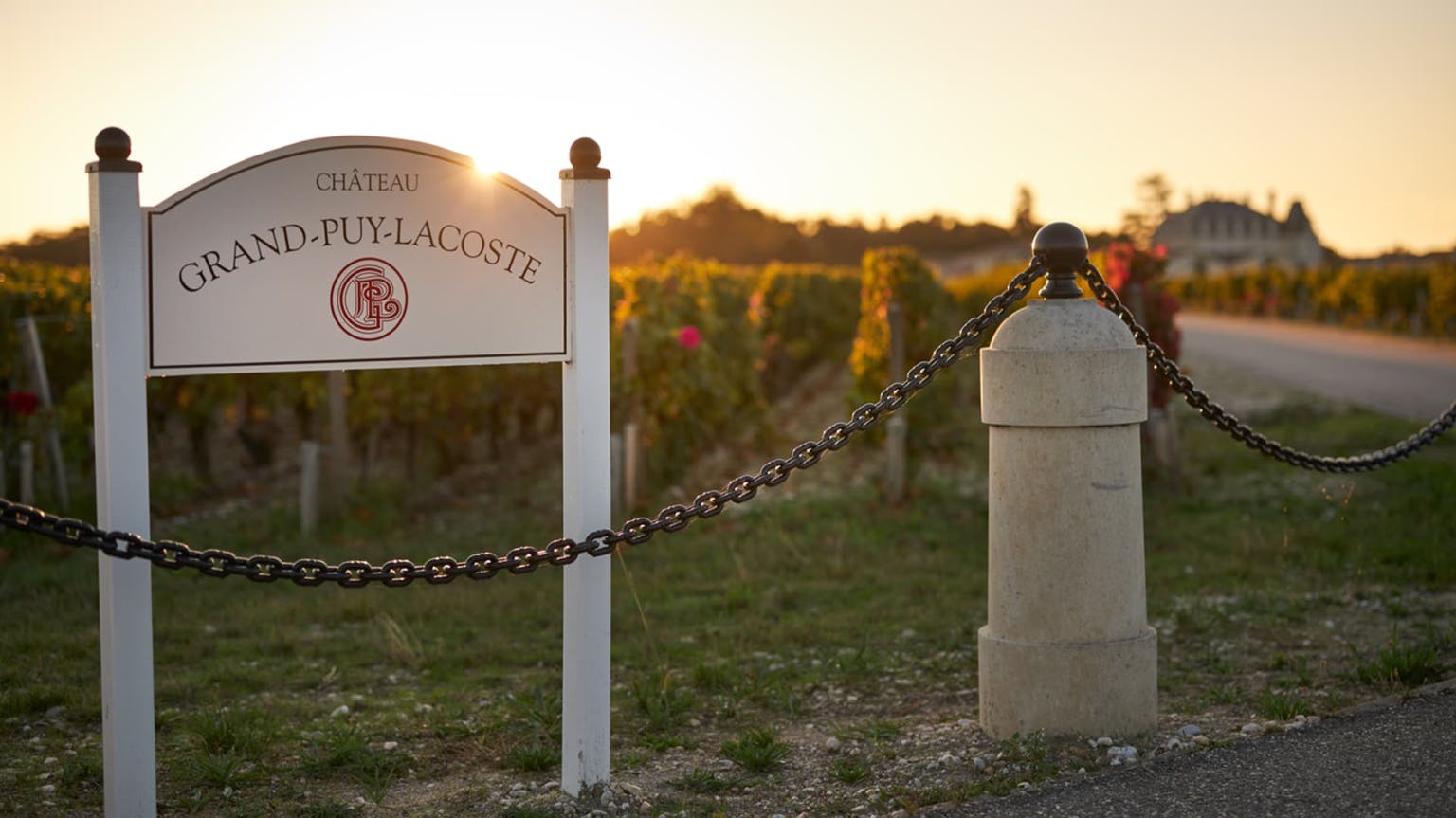
Emeline Borie at Ch. Grand-Puy-Lacoste noted that unlike 2018 and ’19, 2020 is much less exuberant and therefore more transparent – the graphite minerality is less overwhelmed by the concentration of the fruit. Lafite and Duhart-Milon’s yields were less impacted in comparison to many of their neighbours, just 15% down. With a new chai at Duhart-Milon, the team was able to bring greater precision to the wine – something that shows in spades in the glass. Lafite has already wowed the critics, managing to find so much concentration, while sitting at just 12.8% alcohol.
It’s certainly true that the Pauillac wines are not as powerful as other recent vintages, with alcohol levels distinctly lower too, but the fruit and tannins are ripe, and there is amazing freshness. While some wines in Pauillac lack the plushness of 2018 and 2019; for the best châteaux, it has brought more terroir transparency and clarity – wines that are exceptional renditions of site.
Saint-Estèphe
Like most of the Médoc, Saint-Estèphe’s growing season was 10 to 12 days ahead of schedule and remained that way right through to harvest. Cos d’Estournel picked their first reds as early as 12th September, a decision Dominique Arangoïts (the estate’s technical director) believes proved valuable, in order to “maintain an energy, tension and exceptional level of concentration”. It is true that the top wines of the vintage stand out for their added levels of tension, something that nearby Calon Ségur also managed to capture beautifully in their 2020. Being a Cabernet-dominant blend, yields were down about 25% due to the small size of the berries; yet the wine is full of verve and freshness.
From a quality perspective Ch. Lafon-Rochet’s Basile Tesseron finds it “hard to be humble in a vintage like this one. It is just an amazing vintage. The length as well as the depth are truly stunning.”
Ch. Montrose’s Lorraine Watrin is also hugely impressed by the vintage. “It is powerful without excess, good fruit, very expressive and fresh,” she says, comparing it to a combination of 2016 and 2019. Again, for her, it was the mid-August rain that saved the vintage, while the moderate heat later in the month created freshness in the wine.
In an appellation like Saint-Estèphe, where water-retaining clay soils dominate, the appellation should in theory cope better with the extremities of the vintage, even while having less rain than further south in the Médoc. This is broadly true, although is subject to each château’s specific site: Montrose, for example, benefitted from its clay subsoils beneath 1.5 metres of gravel, while Tronquoy-Lalande – with 10 metres of gravel – suffered much more in the drought.
Overall, the wines of Saint-Estèphe have a lovely freshness to them. They are distinctly elegant for the region and not as full-bodied as they sometimes can be. The top examples display great tension on the palate and are some of the most impressive wines of the vintage.
Pessac-Léognan
Pessac-Léognan experienced similar challenges to elsewhere during the growing season – outbreaks of frost, mildew in June, followed by summer drought. Ch. Haut-Bailly’s Véronique Sanders registered the equivalent of two months’ rain in the first 11 days of May – water that would become vital reserves for the vines during the drought in July and early August. The season was dotted with further fortune too – a settled window straight after the rains for the all-important flowering, as well as rain showers in August to relieve hydric stress. It was the earliest harvest on record for the region.
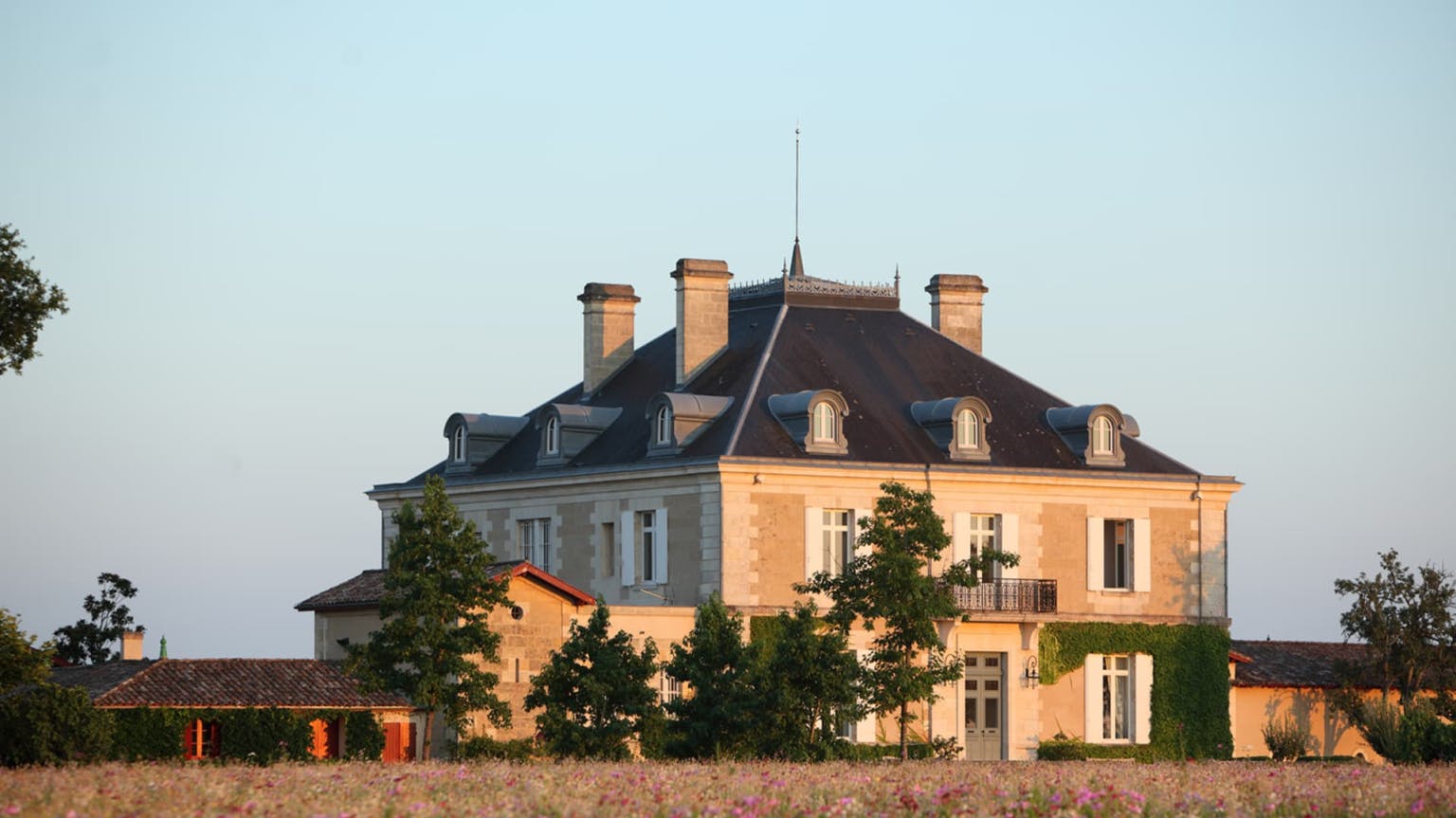
If there is one vigneron who has a great knack of capturing the personality of a vintage, it is Ch. Smith Haut Lafitte’s Fabien Teitgen. For him, 2020 is “a little bit of a mix between the density and the freshness of 2016 and the boldness of 2009” – a tantalising contrast, if ever there was one. Tasting the wines, the intense colour and pristine fruit qualities are consistent with 2009, but he is right when it comes to the freshness. Teitgen believes the cool nights in September helped preserve the acidity.
Similar praise for the vintage comes from Domaine de Chevalier, a winery on a fantastic run at the moment. The 2020, however, might beat them all. Olivier Bernard explains that the structure of the wine was determined by the weather in July. The drought brought about thick skins, small berries and high concentrations of tannin. In this sense, 2020 was less forgiving than 2018 – where there were similarly high concentrations of tannin. For Bernard, the picking window was very narrow and therefore key to achieve equilibrium.
Les Carmes Haut-Brion’s Guillaume Pouthier was so happy with the quality of the fruit that he used the highest proportion (55%) of whole-bunch fermentation to date (which is otherwise rare in Bordeaux). It was also the first vintage where extraction was entirely by “infusion” – submerging the cap gently, rather than just lighter extraction methods paraded as infusion. Pouthier also increased the percentage of new oak to 80%, to complement the quality and concentration of tannins. The result is an amazing wine with great energy.
The wines of Pessac-Léognan are sumptuous, rich, ripe and concentrated. They are remarkably open and juicy, the tannins soft and well-integrated. There’s a complementary freshness and tension to these ripe wines too, though, which made them stand out in our tastings.
Dry whites
The whites of Bordeaux have played second fiddle in the recent run of warm vintages, but three years in a row means vignerons have only got better at handling what is becoming the new norm in terms of climate. Pape Clément has made some great whites in 2020, retaining the distinct personalities of the cooler, mineral Graves whites and the richer, more opulent Pessacs. Ch. Smith Haut Lafitte also knew greater precision was needed to capture the freshness of the vintage, dividing their 10 hectares of white varieties into 40 separate plots and picking them over a three-, to four-week period, an extraordinary commitment that is rewarded in their beautiful 2020s. At Domaine de Chevalier, they felt August’s conditions were key – temperatures that were warm but not hot, with cooler nights that together provided a lovely balance, texture and long finish to their whites.
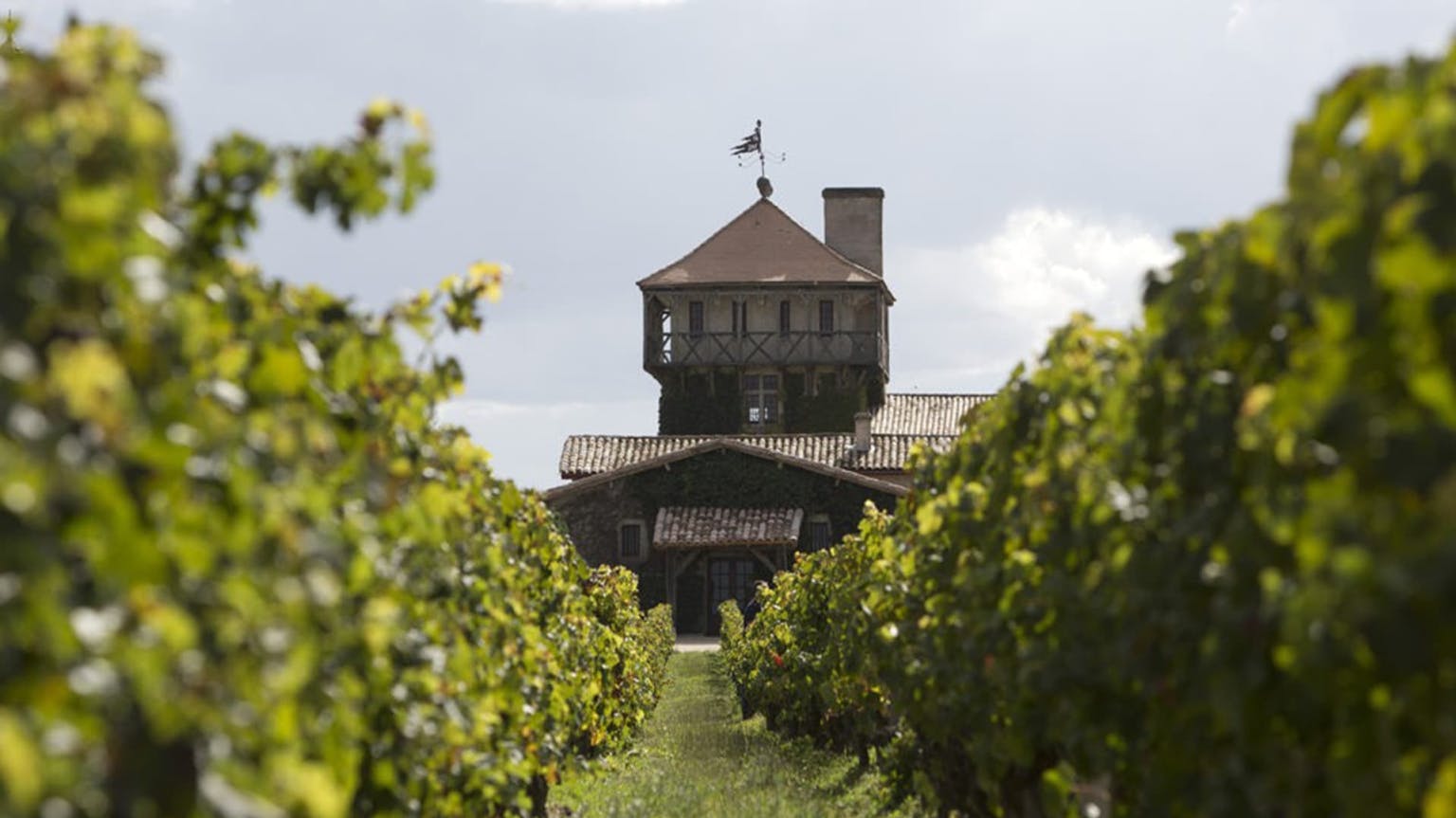
The early season meant the style of white wines was largely down to the vigneron and when they picked. The top examples capture the full-bodied richness so typical of the style, while not straying into overtly tropical flavours and oiliness, retaining a freshness and vibrancy.
Sweet whites
The predominantly dry weather in July, August and September saw very little botrytis develop on the grapes in Sauternes and Barsac. Depending how far vignerons were willing to hold off, picking dates span a staggering six to eight weeks, which has led to very different styles. Ch. d'Yquem’s first pass was early – from 14th to 23rd September, selecting mainly Sauvignon Blanc, which Technical Director Francis Mayeur believes contributed “both invaluable richness and fine acidity”, to the final blend.
For Ch. Guiraud, all the grapes for their Grand Vin had been picked by the end of September – producing what they believe is a typical modern style, a sweet wine with great purity and freshness rather than massive concentration.
At the end of September there was a big shift in the weather, with a long, unsettled spell of three weeks, bringing both rain but also much needed humidity for botrytis to develop. For most properties, including Doisy-Daëne and d’Yquem, the majority of the fruit for their top wines was harvested in mid-October. Ch. Suduiraut went against the grain and waited much later before picking. They did four separate selections, starting in late October and finishing 5th November – and the grapes in their Grand Vin ended up coming mainly from the later passes, with the highest levels of botrytis.
The style of Sauternes in 2020 is therefore very mixed – from lighter, fresher, more delicate, right through to rich and opulent. It is an amazing region in terms of variety and the challenging conditions of 2020 only furthered the diversity of styles.
